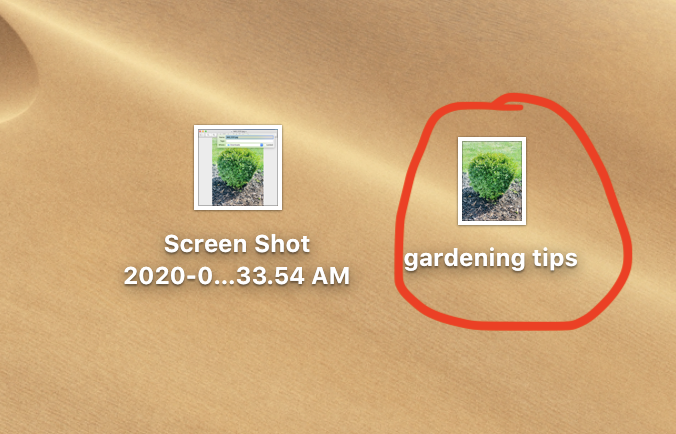Don’t let what I’m about to say scare you (because, secretly, it’s awesome for you).
Recent stats suggest one-fifth of bloggers report that it has become more challenging to get traffic from Google, and 50% of bloggers say it’s gotten harder to get traffic from Facebook.
This makes sense considering there were more than 500 million existing blogs in 2019, and the number of bloggers in the U.S. is expected to increase to 31.7 million in 2020.
But, does the abundance of bloggers mean you should throw your hands up and abandon all plans?
Can I get a loud and resounding “no” here?
The reason why more and more people are building blogs is that it’s a surefire way to grow your business, establish credibility, capture more email subscribers, and help people find your business or side hustle online.
While there is an abundance of bloggers, and some bloggers find it more difficult to get more traffic, it’s essential to remember a couple of things. First, Google’s algorithm is doing a better job than ever delivering up relevant content to search engine users. This means if you are writing helpful content on your blog, Google will reward you, and you won’t be one of the one-fifth worried about relevant traffic.
There are also specific and surefire strategies you can employ on your blog posts to help Google understand what your site is about, so Google can deliver your content to the people that want to hear from you. These conventional strategies include writing helpful on-topic content consistently, engaging in off-page SEO, and optimizing your on-page content for the search engine results pages (SERPs).
But, surprise! We’re not going to talk about those today. This post is going to cover three of the less obvious ways you can drive more traffic to your site via your blog posts.
1. Include images or videos in all of your blog posts

Blogging is all about the written word, right? Nope. Stats show that articles that include images get 94% more views than blog posts that don’t use any visuals.
The wild thing is only 19% of bloggers are now including video in their posts. This means the second you start adding images to your blog posts, you are giving yourself a competitive edge over bloggers in the same niche.
Here are two insider tips to know that will lead to a boost in website performance.
Use real images in your blog posts
You may be tempted to pay for a stock image. While stock images are better than no images at all, research shows that real photos can result in a 35% increase in conversion.
You may not be a pro photographer, but that doesn’t matter. People want to see a real picture of your garden, sourdough start, art project, or whatever it is you specialize in.
Use a free image design service
If you want to design images to use in your blog post (like the one above), there are tons of free resources on the internet like Canva and Crello.
The cool thing about these types of free image design services is they offer thousands of templates you can customize to fit the tone and style of your blog. That means you don’t have to be a designer to create a fun and shareable image.
Additionally, you can count on the dimensions being correct for social shares. This means if someone goes to your blog and decides to share your post, the image will automatically be the correct size for a social share.

Optimize your image for search engines
If you’re a novice blogger and only know the basics of how the internet works, don’t worry. I’ve got you covered. Remember, Google reads words, not pictures.
The best way for Google to understand your images are is to label them appropriately. In SEO terms, this is called using an alt tag.
All you have to do to become a professional SEO alt tagger is save the picture you are going to use to your desktop, then right-click on your picture and select “rename.” Instead of “img10393” (or whatever mumbo jumbo the image is named), rename it your primary keyword.
Here is an example of a recent image relabeled with the primary keyword “gardening tips.”

If I include the “gardening tips” image instead of the “screenshot…” image, Google knows what my picture is. Magic.
If you’re really ambitious, you can also include a video in your content. Video is particularly strategic, as 43% of consumers increasingly want video content, and video content is 50X more likely to drive organic search traffic than text only.
2. Follow blog headline best practices
Writing a blog title can be one of the most difficult parts of publishing a blog post. It’s challenging to think of one line that summarizes your entire post, draws readers in, and makes them want to click.
However, having an awesome headline is one of the best ways to bring traffic to your website. In fact, making appropriate headline changes has the power to provide a 10% increase in clicks, according to MarketingExperiments.
Here is a quick list of what makes a good headline.
Include your target keyword in the first part of the headline
When a searcher types a keyword into Google, Google’s algorithm searches through all relevant posts on the internet to deliver up the right content. Google looks at headlines to understand the theme of a post. That’s why it’s critical to include your primary keyword in your headline.
Consider using a list-based headline (they are wildly popular)
People browse the internet when they are looking for how to do something or for best practices. A list-based article is an outstanding way to present information.
Lists are easy to scan, informative, and quickly give readers the information they seek. If you write a list-based article, then your headline should show readers the post is a list (e.g., 7 Top Gardening Tips for Novice Green Thumbs). According to ConversionXL, 36% of people prefer list-based headlines.
As an added bit of advice, odd-numbered lists tend to outperform even-numbered listicles by 20%.
Hit the headline word-count sweet spot (6-8 words, but up to 13)
If a headline is too short, Google will have a hard time determining the relevance of the post. Google will have the same problem if the headline is too long.
So, what’s the sweet spot? Stats show that headlines with 6-13 words attract the most traffic, and if your headline is between 6-8 words, it can increase your click-through rate by 21%.
3. Publish blog posts regularly
The last tip for driving more site traffic to your website is to publish blog posts regularly. Research shows that companies that publish 16+ blog posts per month get nearly 3.5x more traffic than those that publish 0-4 monthly.
There are a couple of reasons why Google rewards more active blogs with better search result rankings and why they get more traffic. Maybe the reasons are obvious, but since posting regularly is critical to the success of your blog, let’s cover them anyway.
The first reason is that the more content you produce, the more pages Google’s algorithm has to sort through. When you have more content, it’s easier for Google to understand your particular niche, find relevant keywords, and deliver your content to the audience that is looking for you.
The next reason is that the more high-quality content you have on your blog, the more it establishes you as an industry leader. As you provide excellent blog posts, people will come back and visit your site often for more of your expertise.
Not to mention, businesses that maintain blogs receive twice as much email traffic as those that don’t. Email is yet another way to reach your audience and drive meaningful traffic to your website.
Start your blog with Virtue Media today!
Blogging is undoubtedly one of the best ways to capture the attention (and business) of your target audience. That’s why there are over 500 million blogs on the internet.
If you follow SEO best practices as well as the three tips listed above, your blog will be a successful tool in capturing customers.
To get started with your blog, sign up with Virtue Media today. You can either use Virtue Media’s Website Builder, or you can start a WordPress blog via Virtue Media. We can’t wait for you to build your website.




![Yes, B2B Websites Can Use Personalization Too [Here’s How]](https://mdvirtue.com/wp-content/uploads/2022/02/Yes-B2B-Websites-Can-Use-Personalization-Too-Heres-How-400x250.jpeg)

0 Comments